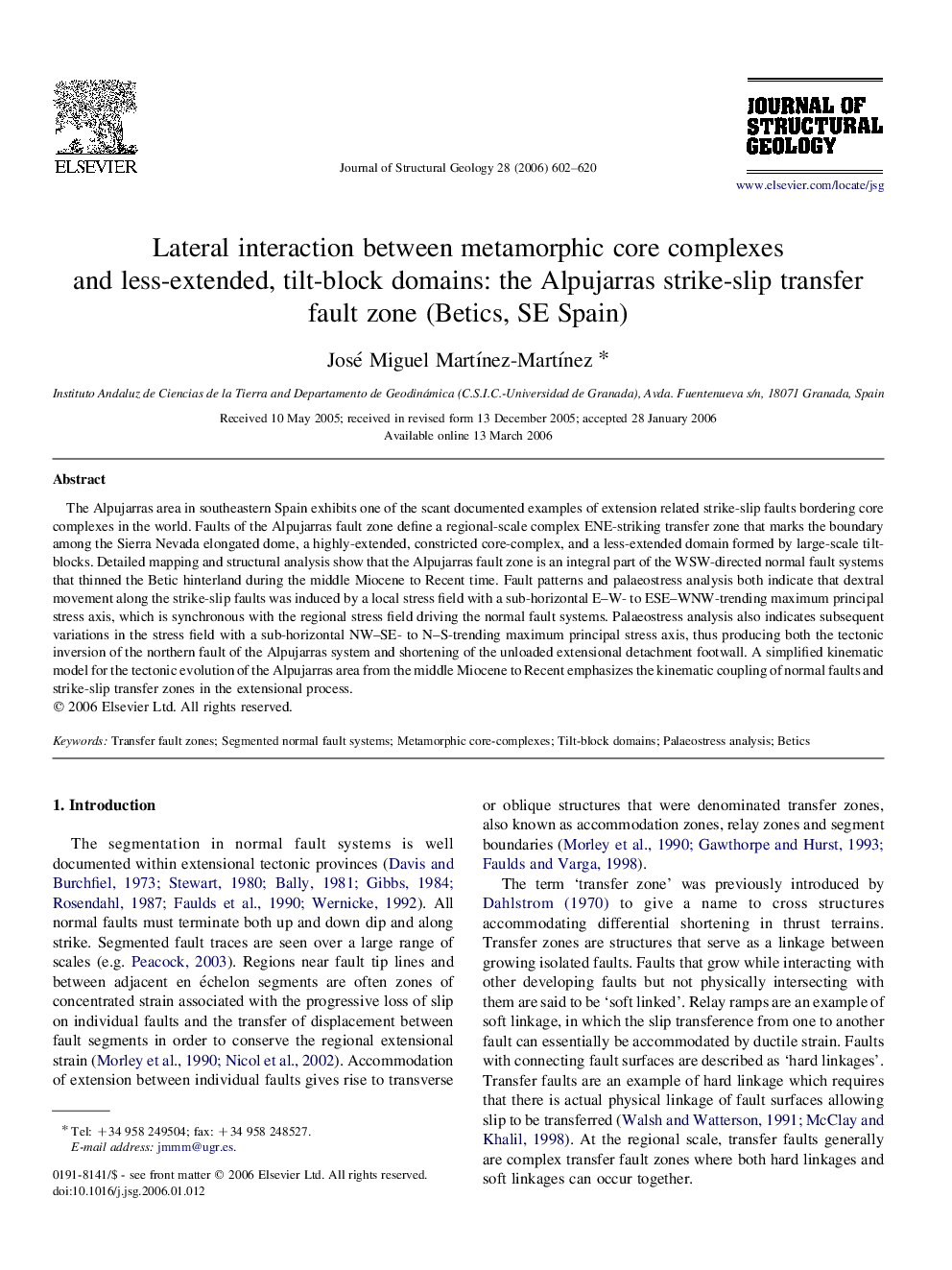| Article ID | Journal | Published Year | Pages | File Type |
|---|---|---|---|---|
| 4734271 | Journal of Structural Geology | 2006 | 19 Pages |
Abstract
The Alpujarras area in southeastern Spain exhibits one of the scant documented examples of extension related strike-slip faults bordering core complexes in the world. Faults of the Alpujarras fault zone define a regional-scale complex ENE-striking transfer zone that marks the boundary among the Sierra Nevada elongated dome, a highly-extended, constricted core-complex, and a less-extended domain formed by large-scale tilt-blocks. Detailed mapping and structural analysis show that the Alpujarras fault zone is an integral part of the WSW-directed normal fault systems that thinned the Betic hinterland during the middle Miocene to Recent time. Fault patterns and palaeostress analysis both indicate that dextral movement along the strike-slip faults was induced by a local stress field with a sub-horizontal E-W- to ESE-WNW-trending maximum principal stress axis, which is synchronous with the regional stress field driving the normal fault systems. Palaeostress analysis also indicates subsequent variations in the stress field with a sub-horizontal NW-SE- to N-S-trending maximum principal stress axis, thus producing both the tectonic inversion of the northern fault of the Alpujarras system and shortening of the unloaded extensional detachment footwall. A simplified kinematic model for the tectonic evolution of the Alpujarras area from the middle Miocene to Recent emphasizes the kinematic coupling of normal faults and strike-slip transfer zones in the extensional process.
Keywords
Related Topics
Physical Sciences and Engineering
Earth and Planetary Sciences
Geology
Authors
José Miguel MartÃnez-MartÃnez,
